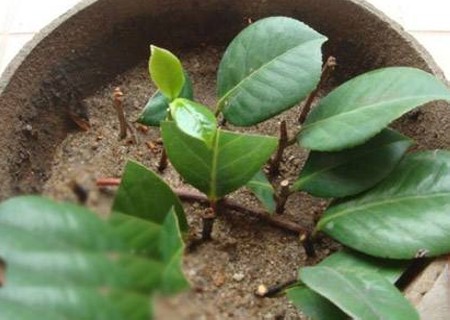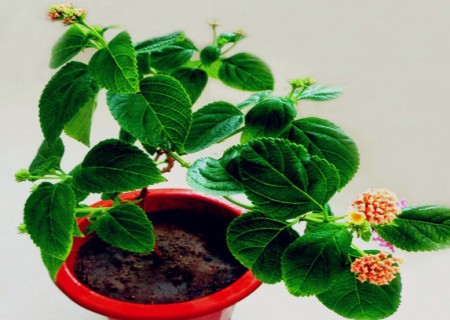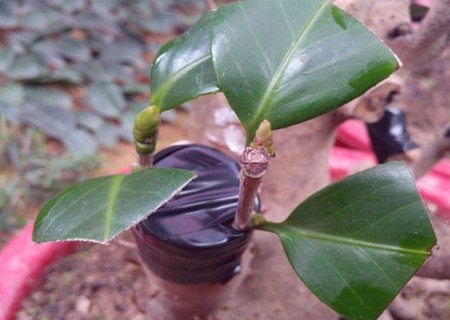Cuttage method of tea plum (technique)
Camellia oleifera is a kind of high-quality flowering shrub species, which is widely used in garden and has a broad space for development. As long as it is well planted, this kind of tree not only has a very beautiful shape, but also presents a scene of luxuriant flowers and leaves. More importantly, potted tea plum planting also has a very high ornamental value, used to decorate the interior, beautify the home environment is very good.

Camellia oleifera can be propagated by cutting, usually in March-April of each spring, of course, if you are not sure whether it is suitable for cutting at present, it is recommended that you check the ambient temperature in advance. Cutting can be carried out if the average temperature is above 12 °C for a continuous week, except for high temperature in summer. Under this temperature, the cell tissue of the plant will not be more active until it is more than 10 °C, and the cuttings will begin to divide, at which time the cuttings will germinate more easily. According to the temperature requirements, we can also adopt the way of autumn cutting to propagate.
So, how to cut potted tea plum? The following editor will share with you the cuttage method of tea plum (technology sharing).
The first thing we need to do is to prepare the branches for cutting. The requirement for cuttings is to have 2-3 bud points, and the end of the branch used to insert into the soil should be cut into a horseshoe shape with a sterilized sharp knife, which can increase the area of the cross section in contact with the soil. The upper part of the cutter should be neatly cut flat so that the section is round, while the upper section should be waxed and sealed to prevent water and juice from transpirating from the wound, and wound infection can also be avoided. this is more conducive to the survival of cuttings. It is recommended to keep half a leaf on the branch.
Coming down is to prepare the flowerpot and insert the bed. In order to achieve the dual effects of breathability and water absorption, it is recommended to use mud basin, and it should be soaked in water one day before use before use. Tea plum as a pot cuttage, it is appropriate to choose fertile and loose, good drainage, air permeability of the acid soil, often use rotten leaf soil or peat soil as the main culture medium. After the cuttage survived, the first pot transplanting can be replaced by sandy loam or fertile and loose mud as culture soil.
And then there's the cutting process. After loading the right amount of culture soil in the mud basin, it can be used as a cutter; then gently insert the horseshoe-shaped end of the prepared cuttings into the soft cutter, the insertion depth should not be too shallow or too deep, like most plant cuttings, moderate. After the cuttings are finished, see which cuttings are not in full contact with the soil, and gently compact the soil around these cuttings so that the soil is in full contact with the cuttings as much as possible. In this way, it can not only stabilize the insert, but also make it easier to survive.
After completing all the cutting steps of tea plum cuttings, the next step is maintenance and management. First of all, move the flowerpot of the tea plum cuttings to a cool and ventilated place. After the cuttings gradually take root and survive, we can appropriately increase some low light exposure to promote photosynthesis and speed up the growth process of the plant. During the whole period of cultivating young plants, we should pay attention to the dry and wet condition of the soil in the bed in order to keep the soil moist, so we should take timely measures to replenish water. After that, we waited for the plant to grow healthily. (written by: laughing Book 21:44)
Time: 2019-06-08 Click:
- Prev

How to plant seeds of five-colored plum blossom
Five-color plum blossom, as soon as you hear the name, you can know that this plant must be colorful and colorful when it blossoms. As a matter of fact, this is true. The flowers of five-colored plums are generally made up of many colors, so they are very bright and colorful. Because the flowering period of five-colored plum is very long, if it is planted as a family pot, as long as the management measures are in place.
- Next

Grafting technique of potted tea plum
Many potted flower plants can be grafted to reproduce young plants, as can tea plum. Although tea plum can also be bred by grafting, it is more difficult to graft and the survival rate is relatively low. Therefore, in order to improve the grafting success rate of potted tea plum, we must master the operation essentials
Related
- Fuxing push coffee new agricultural production and marketing class: lack of small-scale processing plants
- Jujube rice field leisure farm deep ploughing Yilan for five years to create a space for organic food and play
- Nongyu Farm-A trial of organic papaya for brave women with advanced technology
- Four points for attention in the prevention and control of diseases and insect pests of edible fungi
- How to add nutrient solution to Edible Fungi
- Is there any good way to control edible fungus mites?
- Open Inoculation Technology of Edible Fungi
- Is there any clever way to use fertilizer for edible fungus in winter?
- What agents are used to kill the pathogens of edible fungi in the mushroom shed?
- Rapid drying of Edible Fungi

